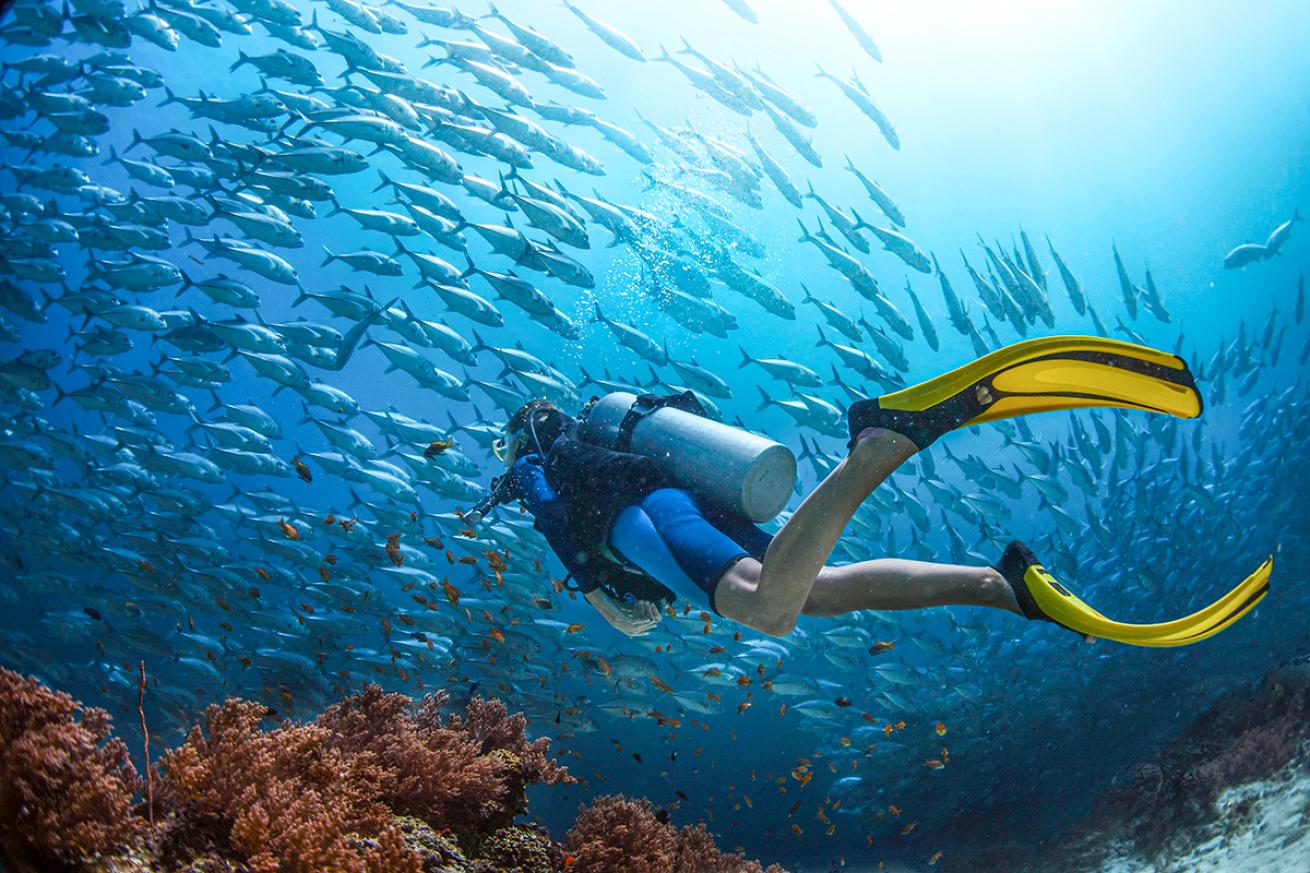How Fins Can Impact Your Underwater Photos

Shutterstock.com/Dudarev MikhailFins are the forgotten part of your camera kit.
The dive fin is an often-overlooked element of underwater photos. Advancing into serious photography can change diving style, including kick techniques and dive site preferences. Fins play a role in both factors. Use these guidelines and advice from your local dive shop to find the perfect pair.
Buoyancy and Kick Techniques
As photographers log more dives, they become more comfortable achieving neutral buoyancy, often adopting horizontal trim in the water. Photographers also slow down as the dive objective shifts from exploring a large area to searching for critters and compositions. The result is a tendency to use the frog kick through the majority of the dive. Blade fins—whether open-heel or closed, bootie or barefoot, vented or solid—are well-suited for the frog kick popular with underwater shooters. The blade is harder to move through the water than other styles, but this isn’t critical since the diver is moving slowly and not as concerned with fatigue. The benefit is that the diver gains greater propulsion with less movement and precise control when pivoting horizontally while composing images.
Fins and Dive Sites
Dive destinations and specific sites also influence the fin choice of avid photographers. The same diver may choose a small, light fin for calm macro diving in warm water and a heavier fin in cold water with a thicker wetsuit and more weight. To deal with current, long fins will help propel the diver efficiently. As a side benefit, the longer fin strokes also help keep the camera more stable.
All fins push water when kicked, and this becomes a big concern when muck and macro diving on sandy, silty substrate. Many divers know that a single misplaced kick can push water against the sand, creating a giant silt cloud unsuitable for photography. Because of this, scissor kicking should be avoided anywhere near the bottom, which takes us back to frog kicking with blade fins.










